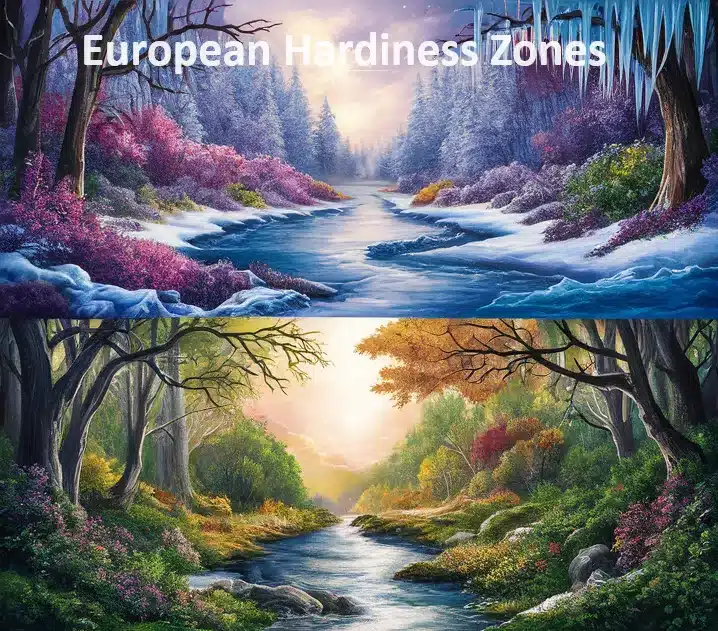

European Hardiness Zones for Plants - a brief explanation
I am writing to you today to explain the European hardiness zones, a handy guide for understanding which plants thrive in specific climates across Europe. Let’s dive right into it:
Hardiness Zones across Europe for Plant Care
European Hardiness Zones: These zones are a classification system that helps gardeners and botanists determine which plants are most likely to survive and thrive in different regions of Europe based on the average minimum winter temperatures.
Zone Classification: Europe’s zones range from Zone 3 (coldest) to Zone 10 (warmest). Zone 3 is for the coldest areas, such as parts of Scandinavia and Russia, where temperatures can drop below -40°C. On the other hand, Zone 10 includes the mildest regions like coastal areas of Southern Spain, where winters are much warmer.
How to Use the Zones: How to Use the Zones: In my experience, knowing your specific zone is the first step in choosing the right plants. Once you identify your zone, look for plants labeled with a matching or lower zone number, as these are most likely to thrive in your area. For instance, if you live in Zone 6, plants rated for Zones 3-6 should do well. On the other hand, plants suited for higher zones, like Zone 8 or 9, may struggle in the colder conditions of Zone 6. Always check the plant’s hardiness zone before purchasing to ensure it aligns with your local climate.
How to Use the Zones: In my experience, knowing your specific zone is the first step in choosing the right plants. For example, if you’re in Zone 7, where winter temperatures can dip to -15°C, you should look for plants that can handle these cold spells. Plants native to your zone or colder ones usually fare the best.
Plant Selection: Each plant has its own preferred hardiness zone, usually mentioned on seed packets or plant labels. If you choose a plant outside of your zone, it might struggle, or worse, not survive at all. So, always match the plant’s hardiness zone with your local zone to give it the best chance.
Microclimates: It’s important to note that even within a specific zone, there can be variations known as microclimates. For instance, a sheltered garden corner might stay warmer than the rest of your yard, allowing you to grow plants that are slightly out of your typical zone. Keep an eye on these spots as they can expand your planting options.
Climate Change Considerations: I’ve noticed that climate patterns are shifting, which might affect the hardiness zone over time. If your area experiences milder winters, you might be able to grow plants from a warmer zone. However, it’s still best to stick to your current zone unless you’re experimenting with a small number of plants.
Winter Protection: If you’re growing plants near the edge of your hardiness zone, consider providing extra winter protection. Mulching, wrapping, or using frost cloths can help your plants survive unexpected cold snaps.
Growing Season: The zones are primarily based on winter temperatures, but don’t forget about your growing season. Some areas in the same zone may have different growing seasons due to altitude or latitude, affecting what you can plant and when.
Practical Example: Let’s say you’re in Zone 8. This means you can comfortably grow plants like lavender, rosemary, and many fruit trees that thrive in mild winters. However, a plant suited for Zone 6, like certain apple varieties, might need extra care or protection to do well in your garden.
By keeping these details in mind, you can make informed choices that suit your local conditions and temperature and help your garden flourish. Happy planting!



